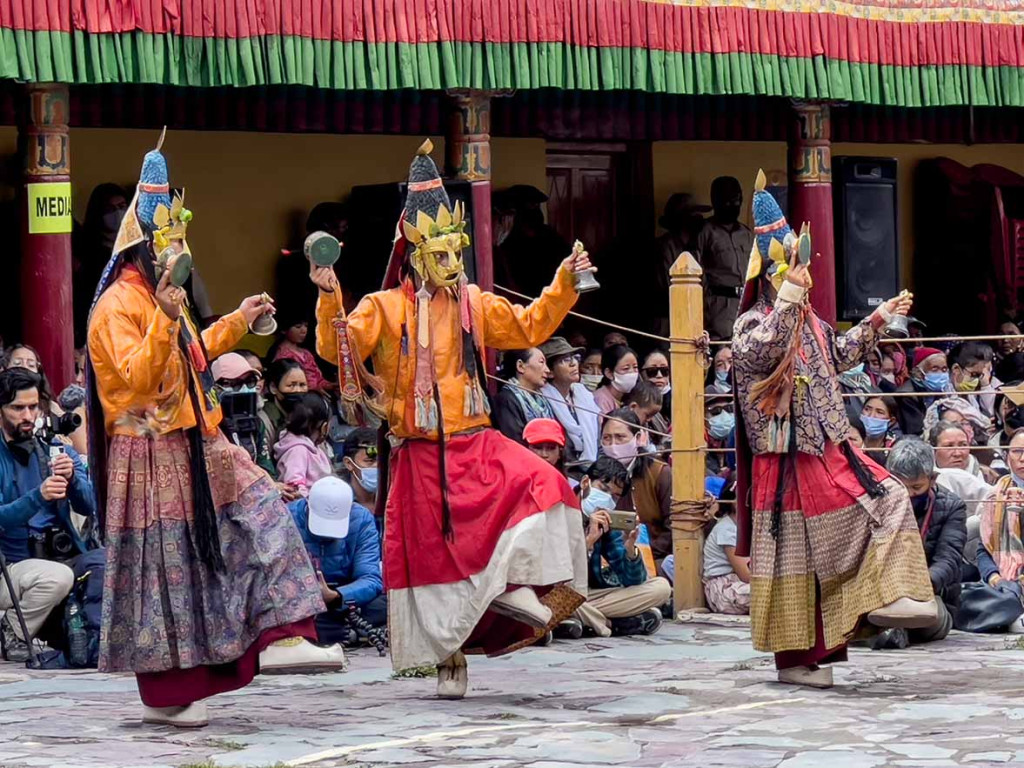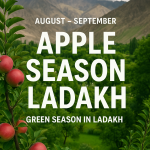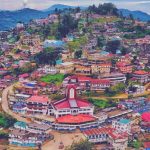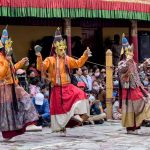Ladakh, often called the “Land of High Passes,” is more than just a stunning Himalayan destination—it’s a melting pot of cultures, traditions, and influences shaped over centuries. From its Buddhist roots to its Central Asian connections, Ladakh’s unique identity is a result of geography, history, and trade routes that have left an indelible mark on its people, customs, and way of life.
🌍 A Unique Blend of Cultures
Unlike the rest of India, Ladakh’s culture has been deeply influenced by Tibetan Buddhism, which dominates its spiritual and social life. However, due to its strategic location on the ancient Silk Route, Ladakh has also absorbed elements from Central Asia, Persia, and even Mongolia. This mix is reflected in its monasteries, festivals, food, and daily life.
⛰️ How Geography Shaped Ladakh’s Culture
✔ Isolation & Self-Sufficiency – Nestled between the Himalayas and Karakoram, Ladakh remained isolated for centuries, leading to a strong sense of self-sustaining community life. Agriculture, animal husbandry, and barter trade formed the backbone of survival.
✔ Spiritual Landscape – The remoteness fostered the growth of Buddhist monasteries like Hemis, Thiksey, and Diskit, making spirituality a central part of Ladakhi life.
✔ Survival in Extreme Climates – Ladakhis adapted their architecture, clothing, and food to the harsh winters, building mud-brick homes, wearing woolen Gonchas (robes), and relying on barley-based foods like Tsampa.
🛤️ The Impact of the Silk Route & Trade
For centuries, Ladakh was a crucial point on the Silk Route, connecting India with Tibet, China, and Central Asia. This brought:
📌 Diverse Trade Goods – Silk, tea, spices, and turquoise from Tibet; pashmina wool and dry fruits from Ladakh; carpets and metals from Persia.
📌 Architectural Influences – Ladakh’s monasteries resemble Tibetan Dzongs, while mosques in Leh show Persian and Kashmiri designs.
📌 Cultural Fusion – Ladakhis have traditions influenced by Tibet (Buddhism & festivals), Kashmir (handicrafts & Sufi culture), and Central Asia (nomadic traditions & cuisine).
🕌 A Harmony of Faiths
While Buddhism is dominant, Islam and Hinduism also play a vital role. The Shia Muslim population in Kargil and Leh, along with a small Hindu community, adds to the cultural diversity of Ladakh. Buddhist-Muslim marriages, shared festivals, and the co-existence of monasteries and mosques showcase religious harmony in this rugged land.
🍲 Food – A Mix of Tibetan, Kashmiri & Nomadic Flavors
Ladakhi cuisine is a result of trade and local adaptation:
✔ From Tibet – Thukpa (noodle soup), Momos, Butter Tea 🥟🥣
✔ From Central Asia – Khambir (local bread), dried meat 🍞🥩
✔ From Kashmir – Rogan Josh, flavored Kehwa Tea 🍛☕
Food in Ladakh reflects its climate, history, and influences from travelers who passed through its ancient trade routes.
🎭 Festivals & Rituals – Celebrating a Unique Identity
Ladakh’s festivals are a mix of Buddhist spirituality and ancient folk traditions.
✔ Hemis Festival – A grand masked dance festival in Hemis Monastery 🎭🕺
✔ Losar (Ladakhi New Year) – Celebrated with feasts, prayers, and dance ✨🥂
✔ Sindhu Darshan Festival – Celebrates the mighty Indus River 🌊
Unlike mainstream Indian festivals, Ladakhi celebrations are deeply spiritual, seasonal, and community-driven.
🛤️ The Impact of Modernization
In recent decades, tourism, globalization, and infrastructure development have brought rapid change:
✔ Increased Connectivity – Roads, flights, and digital access have brought new opportunities but also challenges in preserving traditional culture.
✔ Western Influence – Younger generations are adopting modern fashion, music, and lifestyles, though many still follow traditional ways.
✔ Sustainable Tourism Efforts – Ecotourism and homestays help preserve Ladakhi traditions while adapting to the demands of modern travelers.




